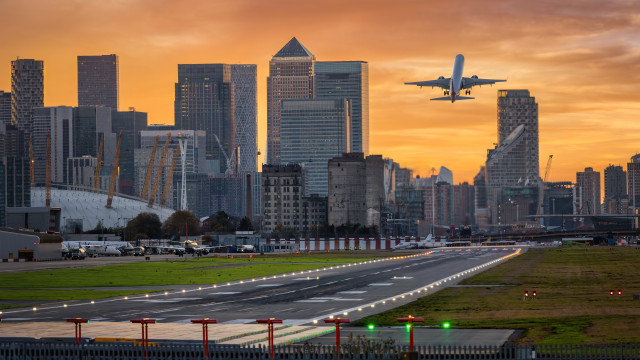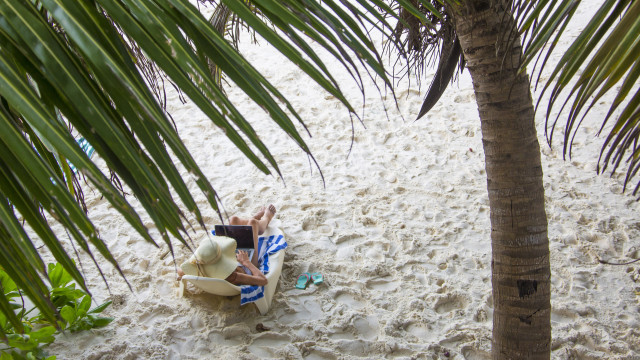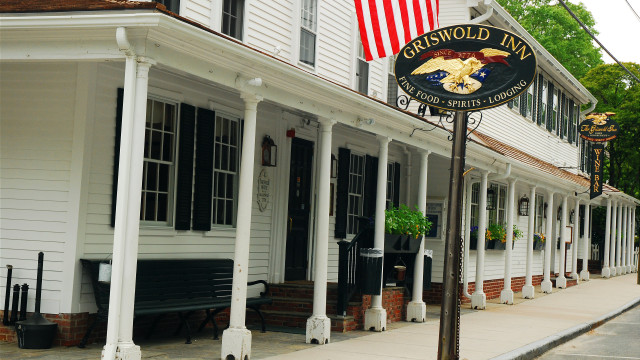




























See Also
See Again
© Getty Images
0 / 29 Fotos
National Cherry Blossom Festival - The festival celebrates the cherry trees gifted to the United States by Tokyo City mayor Ozaki Yukio in 1912.
© Shutterstock
1 / 29 Fotos
Cherry tree - The cherry blossom is seen as a symbol of the beauty and brevity of life in Japanese culture.
© Shutterstock
2 / 29 Fotos
Cherry blossoms - The cherry blossom trees that bloom every year around the Tidal Basin and Washington Monument include weeping Japanese cherry trees, Sargent cherry trees, and Usuzumi and Autumn Flowering cherry trees.
© Shutterstock
3 / 29 Fotos
Japanese lantern
- A 300-year-old Japanese stone lantern was given to Washington, D.C. in 1954 to honor the 100th anniversary of the Treaty of Peace, Amity and Commerce between the US and Japan. The lighting of the lantern kicks off the festival.
© Shutterstock
4 / 29 Fotos
National Cherry Blossom Festival Parade - Festivities include a parade, fireworks, and many other themed activities.
© Shutterstock
5 / 29 Fotos
National Cherry Blossom Festival Parade - The parade runs for 10 blocks along Constitution Avenue and includes floats, marching bands, performers, and giant balloons.
© Shutterstock
6 / 29 Fotos
National Cherry Blossom Festival Parade - There are performances from local schools and dance groups.
© iStock
7 / 29 Fotos
Original idea - Eliza Ruhamah Scidmore, a board member of the National Geographic Society, initially suggested that cherry blossom trees be planted along the Potomac in 1885.
© iStock
8 / 29 Fotos
First donation - The first Japanese donation didn't arrive until 1909, however the 2,000 trees that were delivered had to be destroyed due to disease and pests.
© Shutterstock
9 / 29 Fotos
Second donation - The replacement gift arrived in 1912 as a symbol of friendship between the two nations. There are currently just a few dozen left of the 3,000 original trees still blooming in the nation's capital.
© Shutterstock
10 / 29 Fotos
Somei-Yoshino variety - About 1,800 of the cherry blossom trees donated by Japan are Somei-Yoshino blossoms and were planted around the Tidal Basin.
© Shutterstock
11 / 29 Fotos
Other varieties - There are currently 12 total varieties of cherry blossom trees growing in D.C.
© Shutterstock
12 / 29 Fotos
Yoshino and Kwanzan varieties - Most of the trees growing today are of the Yoshino and Kwanzan varieties and live between 20 and 30 years on average. Yoshino cherries have single, white blossoms, whereas Kwanzans have double, pink blooms. Kwanzans bloom two weeks after Yoshinos.
© Shutterstock
13 / 29 Fotos
Another gift - The United States received yet another donation of 3,800 cherry blossom trees in 1965 in honor of First Lady Bird Johnson's efforts to beautify America.
© Getty Images
14 / 29 Fotos
Peak bloom
- The trees typically stay in bloom for two weeks, and are considered to be in peak bloom when 70% of flowers have opened.
© Shutterstock
15 / 29 Fotos
Blooms - There are around 3,800 cherry blossoms growing annually around Washington Monument, East Potomac Park, and the Tidal Basin.
© Shutterstock
16 / 29 Fotos
Visitors
- Visitors can complete a two-mile walk around the property to witness the beautiful cherry blossoms.
© Getty Images
17 / 29 Fotos
Preservation - In 2011, 120 trees were sent back to Japan to preserve their genetic line. The gift also reinforced the friendship between the nations.
© Getty Images
18 / 29 Fotos
Maintenance - Trees are cared for and maintained by the National Park Service, and their efforts ensure a long lifespan for the blossoms. When trees die, they are replaced with trees bought from local nurseries and farms.
© Getty Images
19 / 29 Fotos
Marriage among the blossoms
- It is possible to obtain a permit to hold a wedding service beneath the cherry blossoms.
© Getty Images
20 / 29 Fotos
Inspiration - The cherry trees provide inspiration for artists all over the city and during the festival, painters and photographers create and sell their unique works of art.
© Getty Images
21 / 29 Fotos
Strict laws - It is against the law to pick the cherry blossoms. Origami cherry blossom seminars are offered in an attempt to deter tourists from picking them.
© Shutterstock
22 / 29 Fotos
Blossom Kite Festival - Paul E. Garber, founder of the National Air and Space Museum, founded the Blossom Kite Festival in 1967. Events include kite crafts and battles.
© Getty Images
23 / 29 Fotos
Protest - In 1938, a group of women strapped themselves to trees to protest workers from cutting them down in an attempt to make space for the Jefferson Memorial. Although the trees were ultimately cut down to build the memorial, city officials compromised by planting more along the Basin.
© Shutterstock
24 / 29 Fotos
Neighborhood Tree Planting Program - The festival reaches out to the community with the Neighborhood Tree Planting Program, whose purpose is to plant new trees throughout the city every year.
© Getty Images
25 / 29 Fotos
Festival suspension - Throughout World War II, the festival was suspended and the trees were renamed "Oriental" flowering trees. It was reinitiated in 1947.
© iStock
26 / 29 Fotos
Mysterious event - In 1941, four trees were mysteriously chopped down. It was thought that someone had cut them down in response to the bombing of Pearl Harbor.
© iStock
27 / 29 Fotos
Gift exchange
- The United States didn't just accept the cherry blossom trees as a gift, they also returned the gift by sending dogwood trees back to Japan.
© Getty Images
28 / 29 Fotos
© Getty Images
0 / 29 Fotos
National Cherry Blossom Festival - The festival celebrates the cherry trees gifted to the United States by Tokyo City mayor Ozaki Yukio in 1912.
© Shutterstock
1 / 29 Fotos
Cherry tree - The cherry blossom is seen as a symbol of the beauty and brevity of life in Japanese culture.
© Shutterstock
2 / 29 Fotos
Cherry blossoms - The cherry blossom trees that bloom every year around the Tidal Basin and Washington Monument include weeping Japanese cherry trees, Sargent cherry trees, and Usuzumi and Autumn Flowering cherry trees.
© Shutterstock
3 / 29 Fotos
Japanese lantern
- A 300-year-old Japanese stone lantern was given to Washington, D.C. in 1954 to honor the 100th anniversary of the Treaty of Peace, Amity and Commerce between the US and Japan. The lighting of the lantern kicks off the festival.
© Shutterstock
4 / 29 Fotos
National Cherry Blossom Festival Parade - Festivities include a parade, fireworks, and many other themed activities.
© Shutterstock
5 / 29 Fotos
National Cherry Blossom Festival Parade - The parade runs for 10 blocks along Constitution Avenue and includes floats, marching bands, performers, and giant balloons.
© Shutterstock
6 / 29 Fotos
National Cherry Blossom Festival Parade - There are performances from local schools and dance groups.
© iStock
7 / 29 Fotos
Original idea - Eliza Ruhamah Scidmore, a board member of the National Geographic Society, initially suggested that cherry blossom trees be planted along the Potomac in 1885.
© iStock
8 / 29 Fotos
First donation - The first Japanese donation didn't arrive until 1909, however the 2,000 trees that were delivered had to be destroyed due to disease and pests.
© Shutterstock
9 / 29 Fotos
Second donation - The replacement gift arrived in 1912 as a symbol of friendship between the two nations. There are currently just a few dozen left of the 3,000 original trees still blooming in the nation's capital.
© Shutterstock
10 / 29 Fotos
Somei-Yoshino variety - About 1,800 of the cherry blossom trees donated by Japan are Somei-Yoshino blossoms and were planted around the Tidal Basin.
© Shutterstock
11 / 29 Fotos
Other varieties - There are currently 12 total varieties of cherry blossom trees growing in D.C.
© Shutterstock
12 / 29 Fotos
Yoshino and Kwanzan varieties - Most of the trees growing today are of the Yoshino and Kwanzan varieties and live between 20 and 30 years on average. Yoshino cherries have single, white blossoms, whereas Kwanzans have double, pink blooms. Kwanzans bloom two weeks after Yoshinos.
© Shutterstock
13 / 29 Fotos
Another gift - The United States received yet another donation of 3,800 cherry blossom trees in 1965 in honor of First Lady Bird Johnson's efforts to beautify America.
© Getty Images
14 / 29 Fotos
Peak bloom
- The trees typically stay in bloom for two weeks, and are considered to be in peak bloom when 70% of flowers have opened.
© Shutterstock
15 / 29 Fotos
Blooms - There are around 3,800 cherry blossoms growing annually around Washington Monument, East Potomac Park, and the Tidal Basin.
© Shutterstock
16 / 29 Fotos
Visitors
- Visitors can complete a two-mile walk around the property to witness the beautiful cherry blossoms.
© Getty Images
17 / 29 Fotos
Preservation - In 2011, 120 trees were sent back to Japan to preserve their genetic line. The gift also reinforced the friendship between the nations.
© Getty Images
18 / 29 Fotos
Maintenance - Trees are cared for and maintained by the National Park Service, and their efforts ensure a long lifespan for the blossoms. When trees die, they are replaced with trees bought from local nurseries and farms.
© Getty Images
19 / 29 Fotos
Marriage among the blossoms
- It is possible to obtain a permit to hold a wedding service beneath the cherry blossoms.
© Getty Images
20 / 29 Fotos
Inspiration - The cherry trees provide inspiration for artists all over the city and during the festival, painters and photographers create and sell their unique works of art.
© Getty Images
21 / 29 Fotos
Strict laws - It is against the law to pick the cherry blossoms. Origami cherry blossom seminars are offered in an attempt to deter tourists from picking them.
© Shutterstock
22 / 29 Fotos
Blossom Kite Festival - Paul E. Garber, founder of the National Air and Space Museum, founded the Blossom Kite Festival in 1967. Events include kite crafts and battles.
© Getty Images
23 / 29 Fotos
Protest - In 1938, a group of women strapped themselves to trees to protest workers from cutting them down in an attempt to make space for the Jefferson Memorial. Although the trees were ultimately cut down to build the memorial, city officials compromised by planting more along the Basin.
© Shutterstock
24 / 29 Fotos
Neighborhood Tree Planting Program - The festival reaches out to the community with the Neighborhood Tree Planting Program, whose purpose is to plant new trees throughout the city every year.
© Getty Images
25 / 29 Fotos
Festival suspension - Throughout World War II, the festival was suspended and the trees were renamed "Oriental" flowering trees. It was reinitiated in 1947.
© iStock
26 / 29 Fotos
Mysterious event - In 1941, four trees were mysteriously chopped down. It was thought that someone had cut them down in response to the bombing of Pearl Harbor.
© iStock
27 / 29 Fotos
Gift exchange
- The United States didn't just accept the cherry blossom trees as a gift, they also returned the gift by sending dogwood trees back to Japan.
© Getty Images
28 / 29 Fotos
The National Cherry Blossom Festival: breathtaking images and surprising facts
The nation's most beloved spring festival begins March 20
© Getty Images
Washington's National Cherry Blossom Festival typically welcomes more than 1.5 million visitors to experience thousands of beautiful cherry blossom trees and take part in the many activities on offer. It's a highly anticipated yearly event, and it's no surprise—the images speak for themselves!This year, the festival runs from March 20 to April 13. The National Park Service predicts that the 2025 peak bloom will occur between March 28 and March 31.To learn about the festival's history and how it's celebrated, click through the following gallery.
RECOMMENDED FOR YOU


















MOST READ
- Last Hour
- Last Day
- Last Week








